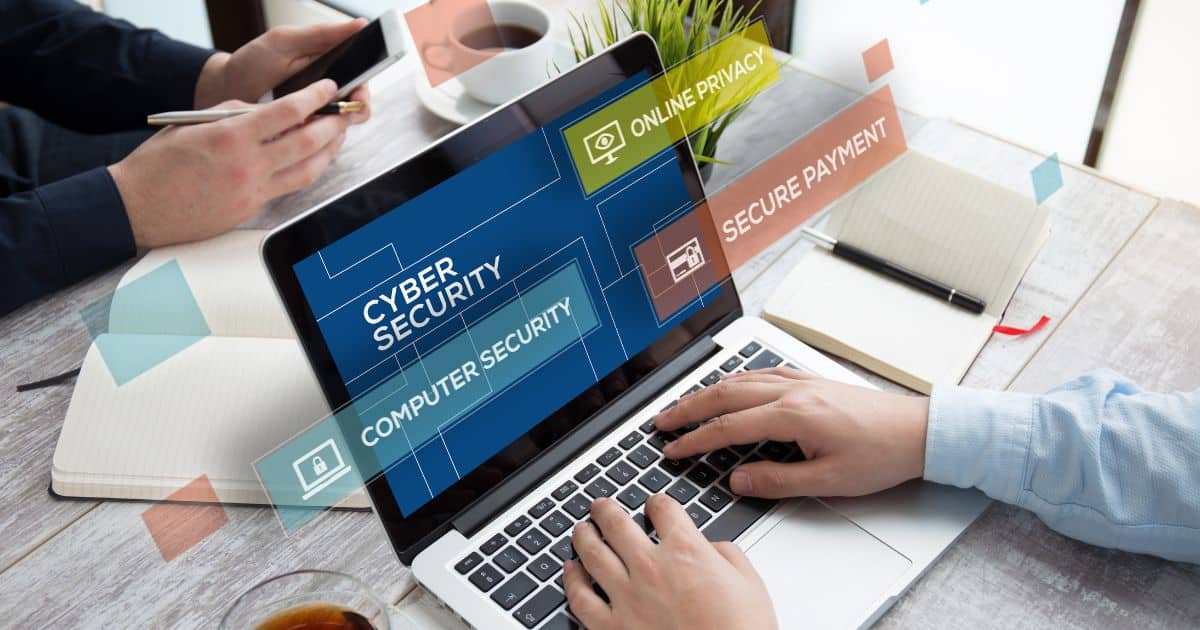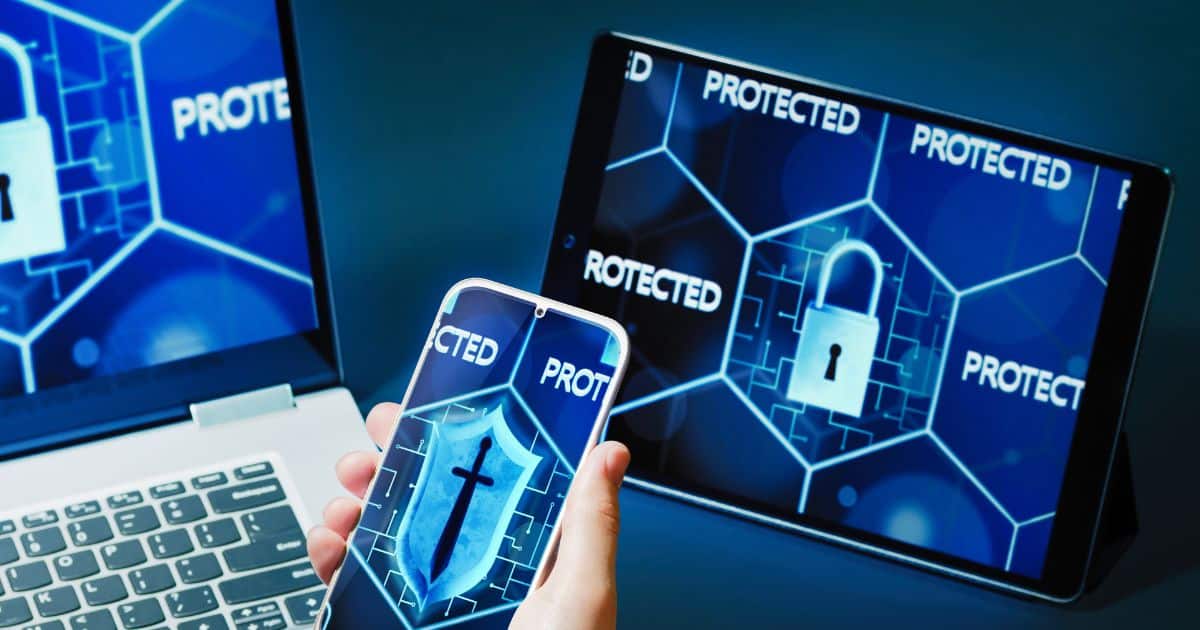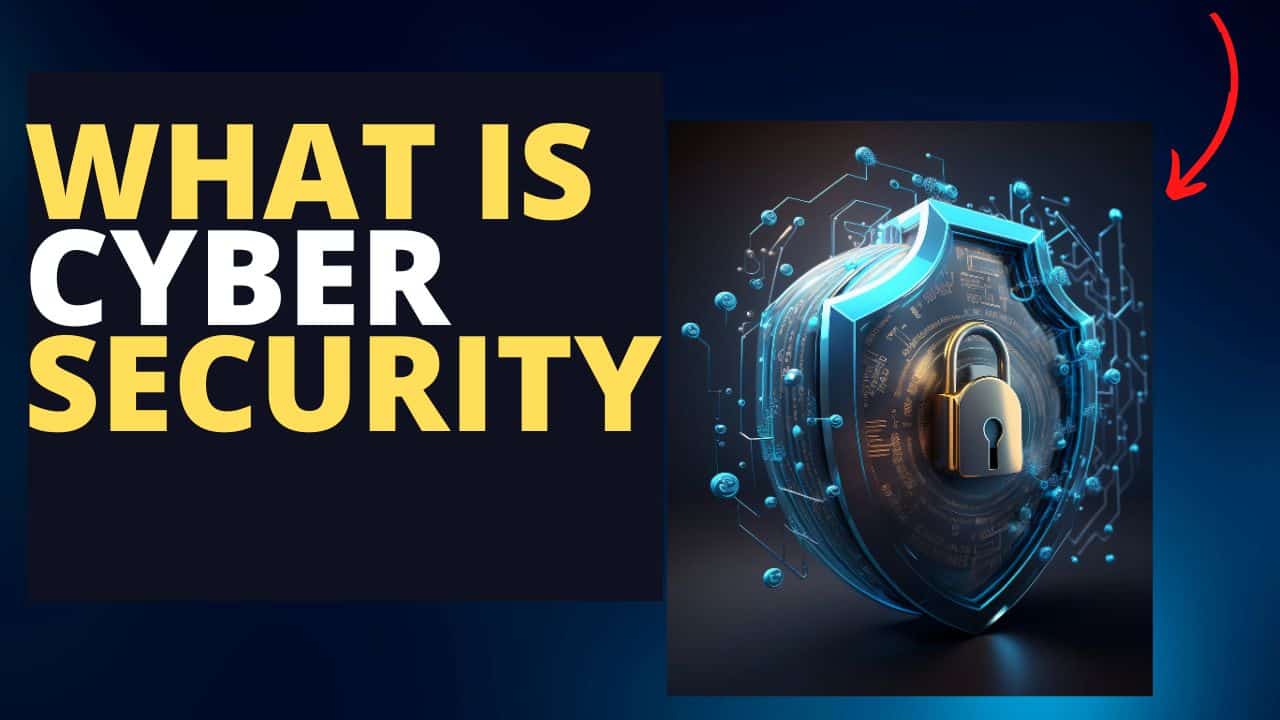Cyber security protects computers, servers, mobile devices, electronic systems, networks and data from digital attacks. Cybersecurity is becoming increasingly important as society relies on technology to store and transmit sensitive information. For example, in today’s online banking and e-commerce, we must protect our private data from hackers.
Cybersecurity encompasses many practices designed to protect devices and networks from unauthorized access or damage. Which includes techniques such as firewalls, antivirus software, intrusion detection systems (IDS), virtual private networks (VPNs) and encryption methods that can help keep your data secure. However, cyber threats constantly evolve, with new tactics being developed daily. Hence, individuals and organizations must stay up-to-date with the latest cybersecurity measures to protect against potential cyber-attacks.
If you want free protection that can help, check out our article on Bitdefender Traffic light. Still, we recommend using Bitdefender Total Security Anti-Virus for a complete package for Viruses and Malware. With 24 years of experience working in IT and 16 working in Network Security, this is the Anti-Virus package I have used for the last decade.
We all should also use encryption when sending sensitive data via Email; if you are interested in this, then check out our Email Encryption Article
What Exactly Does Cyber Security Do?
One of the main functions of cybersecurity is identifying potential threats before they can cause harm. Cybersecurity experts use different methods, such as penetration testing and vulnerability assessments. To identify weaknesses in a company’s infrastructure that hackers could exploit. Once these vulnerabilities are identified, they can be patched before attackers can use them.
Another critical aspect of cybersecurity is protecting sensitive information from unauthorized access. This is achieved through encryption techniques which ensure that only authorized parties have access to crucial information like passwords or financial records. In addition, firewalls and intrusion detection systems are put in place to monitor network traffic for suspicious activities and block any attempts at the intrusion into the system. Overall, cybersecurity plays a critical role in ensuring that businesses remain secure against online threats and continue operating smoothly without fear of being compromised by malicious actors on the internet.
Types of Cyber Attacks
Cybersecurity protects computer systems, networks, and sensitive data from unauthorized access, theft, damage, or other cyber attacks. Cyber threats are rising globally, and various attacks have been identified. Among them are malware attacks that target software vulnerabilities to infect a system with malicious code. Malware attacks can be in the form of viruses, trojan horses, worms or ransomware.
Another type of attack is phishing scams- fraudulent attempts made by hackers to obtain sensitive information such as login credentials or credit card details through emails and social media platforms. With advancements in technology and communication mediums come new methods for attackers to penetrate defences, hence the need for robust cybersecurity measures.
Social engineering is another typical attack used by hackers that involve manipulating individuals into divulging confidential information willingly. It can also take the shape of impersonation, where attackers disguise themselves as legitimate entities to gain trust and access to valuable information or systems. Understanding these types of cyber attacks can help organizations implement effective security protocols to protect their digital assets from harm. If you would like to know more about social engineering, check out this article What is Social Engineering
Challenges of Cyber Security
Cybersecurity refers to the practice of protecting computer systems, networks, and other digital devices from unauthorized access or attacks that are aimed at exploiting vulnerabilities in the system. Cybersecurity is a critical concern for individuals, organizations, and governments. It can result in data theft, financial losses, identity thefts, and reputational damages.
One of the significant challenges of cybersecurity is keeping up with constantly evolving threats. Attackers are continually developing new ways to circumvent security measures and exploit weaknesses in computer systems. As a result, cybersecurity professionals must continuously update their knowledge and skills to keep pace with emerging threats. Additionally, many organizations need help implementing robust security protocols across their entire infrastructure due to limited resources or competing priorities.
Another challenge facing cybersecurity is the human factor. Employees can unintentionally create security vulnerabilities by falling for phishing scams or using weak passwords. As a result, companies must educate their employees on best practices for maintaining vital cybersecurity hygiene. They must provide ongoing training programs to ensure everyone stays vigilant against potential threats.
What are the top cybersecurity challenges?
Cybersecurity protects computer systems, networks, and sensitive information from theft, damage or unauthorized access. The rise of cybercrime has increased the cybersecurity challenges that organizations face today. Here are some of the top cybersecurity challenges:
1) Phishing attacks: Phishing is a social engineering attack that targets people through email or text messages. Cybercriminals use these tactics to steal personal information such as login credentials or credit card details.
2) Ransomware attacks: Ransomware is malware that encrypts important files on a victim’s computer system and demands payment for the decryption key. This can lead to severe consequences for businesses that may lose access to management of their valuable data.
3) Insider threats: Insider threats come from employees who have authorized access to sensitive information within an organization but misuse it intentionally or unintentionally.

These are just some examples of organizations’ top cybersecurity challenges today. As a result, companies must implement comprehensive security protocols and train employees to identify and respond to potential cyber threats.
The Importance of Cybersecurity
Cyber threats have become more sophisticated and prevalent with the rise of technology and its integration into daily activities. As a result, implementing robust cyber-security measures has become increasingly important.
Firstly, cyber-attacks can cause significant financial losses to individuals and businesses because hackers can steal sensitive information, such as credit card details or bank account credentials which they can use to make fraudulent transactions. Additionally, cyber-attacks can cripple business operations leading to loss of revenue or even complete shutdowns.
Secondly, cyber-security breaches pose a risk to personal safety and privacy. Cybercriminals can gain access to personal data such as home addresses or social security numbers which they use for identity theft or stalking purposes. Therefore, cyber security is, safeguarding confidential data through secure online practices like using strong passwords to ensure one’s private life remains private.
In conclusion, securing cyberspace is critical in today’s digital age, where most activities are online-based. Implementing adequate security measures will prevent financial loss and protect personal privacy, ensuring peace of mind while browsing the web or conducting business transactions online.
Data Breaches: Prime Target
It involves a set of technologies, processes, and practices that safeguard computer systems and digital data against cyber threats such as data breaches, hacking attempts, malware attacks, and phishing scams.
Data breaches are one of the most significant cybersecurity risks individuals and organizations face. A data breach is when an unauthorized party gains access to confidential or sensitive information such as personal identifying information (PII), financial records or intellectual property. Cybercriminals target companies with large amounts of valuable data, such as retailers, healthcare providers, financial institutions and government agencies.
A data breach’s impact can be significant for individuals whose personal information has been compromised and businesses that may suffer reputational damage and legal fines. Therefore companies must protect their networks through effective cybersecurity measures, including firewalls, antivirus software updates and employee training on best security practices.
Denial-of-Service Attack
A denial-of-service (DoS) attack is a type of cyberattack that aims to disrupt the regular traffic of a website or network. The attacker overwhelms the target with an excessive amount of fake requests, which causes the system to crash or become unavailable for legitimate users. DoS attacks are not designed to steal data but cause chaos and inconvenience. This type of attack can be launched remotely using botnets or through infected machines controlled by the attacker.
Cybersecurity measures can help prevent DoS attacks from happening. One way is by implementing firewalls and intrusion detection systems that filter out suspicious traffic before reaching the target server. Additionally, many companies use distributed denial-of-service (DDoS) mitigation services, which allow them to absorb more significant amounts of traffic without being overwhelmed. It is also essential for organizations to conduct regular vulnerability assessments and penetration testing on their systems to identify potential weaknesses that attackers could exploit.
In conclusion, a denial-of-service attack is just one example of how cybercriminals can disrupt businesses and individuals online. However, organizations can reduce their risk exposure from DoS attacks and other types of cyber threats by taking proper cybersecurity measures such as implementing firewalls, intrusion detection systems, and DDoS mitigation services and conducting regular vulnerability assessments and penetration testing.
Insider Threats
While most cybersecurity strategies focus on external threats from hackers and malicious actors, internal or insider threats are also significant for businesses.
Insider threats refer to security risks posed by individuals within an organization with access to sensitive data, networks or systems. Such individuals may include employees, contractors or business partners who intentionally or unintentionally breach established security protocols. For instance, a worker could steal confidential information such as financial records, customer data or trade secrets for personal gain. Alternatively, they may cause harm through carelessness in handling sensitive information.
Preventing insider threats requires a comprehensive approach that includes regular training for staff members on recognizing potential risks and reacting if they identify one; limiting access only when necessary; monitoring employee activities inside the network; and implementing strict guidelines regarding using company-owned equipment offsite. Failure to take adequate measures against insider threats can lead to reputational harm for your company and financial losses due to legal fees related to litigation resulting from data breaches.
Latest Cyber Threats
Cybersecurity protects internet-connected systems, including hardware, software, and data, from digital attacks. As technology advances, so do the methods used by cybercriminals to exploit vulnerabilities in computer systems. Cyber threats constantly evolve, from simple phishing scams to complex malware attacks.
One of the latest common cyber threats is ransomware. Ransomware is malware that encrypts a victim’s files and demands payment to restore access. Another rising threat is social engineering attacks, where hackers use psychological manipulation tactics to trick people into divulging sensitive information or taking specific actions like clicking on malicious links.

The proliferation of Internet-of-Things (IoT) devices has also created new opportunities for cybercriminals. IoT devices with weak security protocols can be easily compromised by attackers who use them as entry points into more extensive networks or as part of botnets that facilitate distributed denial-of-service (DDoS) attacks. As such, individuals and organizations must stay vigilant against these ever-evolving cybersecurity threats.
IoT With 5G Network: The New Era of Technology and Risks
New risks must be considered with the emergence of IoT (Internet of Things) devices and 5G network technology. IoT devices are becoming more prevalent daily, but their security vulnerabilities pose a significant risk to users’ information. Additionally, with the increased speed and capacity provided by 5G networks, there is a higher likelihood of cyberattacks due to the large amounts of data being transmitted.
As we enter this new era of technology, with IoT devices and 5G networks becoming more common, individuals and organizations must take proactive measures to protect themselves against potential cyber threats, including implementing solid passwords or multi-factor authentication methods on all electronic devices and networks and staying informed about current cybersecurity risks and best practices for protection.
Cloud is Also Potentially Vulnerable
With the rise of cloud computing, businesses now have more flexibility and convenience when storing and accessing data. However, this also opens up new vulnerabilities that must be addressed.
One potential vulnerability in cloud computing is the risk of data breaches due to weak passwords or poor security practices. That can result in sensitive information being exposed or stolen by hackers. Additionally, service disruptions can always be caused by cyberattacks or natural disasters.
To mitigate these risks, businesses must implement strict security protocols, including regular data backups and updates and employee training on best cybersecurity practices. In addition, companies must work with their chosen cloud provider to ensure they use the latest security measures and take all necessary precautions to keep their data safe from potential threats.
What are the different types of Cybersecurity?
With the increasing reliance on technology and interconnected devices today, cybersecurity has become essential to protect sensitive information.
There are various types of cybersecurity measures that organizations can implement to keep their systems secure. One such measure is network security which involves securing a company’s internal network by setting up firewalls and monitoring traffic flow. Another type is application security which focuses on identifying vulnerabilities within software applications to prevent hackers from exploiting them.

Apart from these two primary types of cybersecurity measures, there are other important ones, such as cloud security, endpoint security, identity management, and disaster recovery planning. Cloud security protects data stored in cloud services like Google Drive or Dropbox. In contrast, endpoint security helps protect endpoints such as laptops or mobile devices from cyber threats. Finally, identity management aims to verify the identities of individuals accessing a system, while disaster recovery planning helps businesses recover data after an attack.
Dridex Malware
Dridex malware is a banking Trojan targeting the Windows operating system. It has been around since 2014 and is known for stealing login credentials, financial information, and personal data from its victims. The malware is often distributed through phishing emails with malicious attachments or links to infected websites.
Cybersecurity protects computer systems, networks, and digital information from unauthorized access, theft, or damage. Cybersecurity has become more critical with the increasing reliance on technology in our daily lives and businesses. Cyber attacks can cause significant financial losses and reputational damage to individuals and organizations.
To prevent the Dridex cyber attacks and other malware infections, it is essential to have robust cybersecurity measures in place, including strong passwords, regular software updates, antivirus software, firewalls, and employee training programs on identifying phishing scams. Taking proactive steps towards cybersecurity awareness and prevention measures against Dridex malware attacks will help businesses protect themselves from financial loss due to cybercrime activities.
Supply Chain Attacks and Third-party Risks
One of the emerging threats in this field is supply chain attacks and third-party risks.
Supply chain attacks occur when an attacker targets a vulnerable point in a company’s supply chain to gain unauthorized access to their systems or steal sensitive data. These vulnerabilities include outdated software or weak passwords used by third-party vendors with access to sensitive information. Third-party risks also increase as companies rely more on vendors for business operations. If a vendor experiences a cyber attack, it can compromise the security of their client’s data.
Organizations must implement stringent security measures across their entire supply chain network to mitigate these risks. This includes monitoring third-party vendors’ security practices and regularly auditing their systems for potential vulnerabilities. Companies should also encourage all employees to follow good cybersecurity practices like using strong passwords and promptly reporting suspicious activity on their devices or networks to IT departments.
The potential of Artificial Intelligence (AI)
Artificial Intelligence (AI) has the potential to revolutionize the field of cybersecurity. With the increasing number of cyber-attacks, organizations seek ways to enhance their security measures. AI can help companies identify and mitigate cyber threats by analyzing vast amounts of data quickly and accurately. It can also place patterns and anomalies that a human eye may miss, making it an essential tool in detecting and responding to attacks.
AI-powered systems can also help reduce the workload on human security analysts by automating specific tasks such as monitoring network traffic, detecting malware, analyzing logs, and more. Allowing security teams to focus on other critical areas while ensuring their defences remain strong against ever-evolving cyber threats.
However, there are concerns about AI’s role in cybersecurity. For example, hackers could use AI algorithms to exploit system vulnerabilities or create new attack methods that could be challenging to detect. Therefore, organizations must stay vigilant and constantly adapt their cybersecurity strategies as technology evolves. In summary, while AI holds tremendous potential in enhancing cybersecurity measures for businesses across industries, it is essential to approach its integration cautiously and implement robust safeguards against potential risks.
Preventing Cyber Attacks
Furthermore, training employees on cybersecurity awareness is critical in preventing cyber-attacks. This includes educating them on identifying phishing emails or suspicious links containing malware and enforcing strong passwords and multi-factor authentication for accessing sensitive data. With these measures in place, organizations can significantly reduce their risk of falling victim to a cyberattack by taking a proactive approach towards cybersecurity.

Real-Time Data Monitoring
Real-time data monitoring is a critical component of cybersecurity. It involves constant surveillance and analysis of network activity to identify potential threats and quickly respond to them. With the increasing number of cyber-attacks, real-time data monitoring is essential for organizations to protect their sensitive information from theft or damage.
Real-time data monitoring gives organizations real-time visibility into their networks, enabling them to detect any suspicious activities as soon as they occur. In addition, analyzing network traffic allows security teams to identify unusual patterns that could indicate an attack in progress. This can include anything from unauthorized access attempts to malware infections.
In summary, real-time data monitoring plays a crucial role in maintaining the security of an organization’s network infrastructure. Continuous network activity surveillance and analysis enables businesses to detect and respond quickly to potential threats before they cause significant damage.
Improved Security for IoT Devices
Security concerns have increased significantly with the rise of IoT devices in recent years. IoT devices are connected to the internet and can be accessed remotely by anyone with malicious intentions.
There has been a push for improved security for IoT devices to address this issue. One solution is implementing more robust authentication infrastructure security methods to ensure only authorized users can access these devices. This includes two-factor authentication or biometric verification.
Another solution is to increase encryption on all data transmitted between these devices and other networks. They make it more difficult for hackers to intercept and steal sensitive information from these IoT devices.

Finally, manufacturers must prioritize security in their product design process. They should conduct regular vulnerability assessments and provide timely updates that patch any discovered vulnerabilities in their products’ security systems. By implementing these measures, we can ensure that our increasing reliance on IoT technology comes at a cost other than our precious cybersecurity.
Benefits of CyberSecurity
Increasing use of technology in all aspects of our lives, cybersecurity has become more critical than ever before. Here are some benefits that come with implementing strong cybersecurity measures:
Firstly, it helps to protect sensitive information such as personal identification details or confidential business data. Stolen data can be used to conduct identity theft or sell to rival companies for financial gain. Cybersecurity ensures that only authorized personnel have access to sensitive data.
Secondly, strong cybersecurity measures help keep business continuity and prevent costly cyberattacks, which could result in a company losing income and reputation. A successful cyberattack could lead to system downtime and disruption of operations resulting in lost revenue and customer trust.
Finally, by ensuring a secure environment for online business transactions, individuals and businesses alike can enjoy peace of identity and access management mind knowing their sensitive information is safe from hackers who may attempt to steal it through unsecured connections.
All these benefits make it clear why cybersecurity should be taken seriously by everyone using computers, whether individually or within an organization.
Business Solutions for Cyber Security
Cybersecurity refers to the measures, technologies, and practices organizations use to protect their computer systems, networks, and sensitive data from unauthorized access, theft or damage. These threats can come in many forms, including phishing attacks, malware infections, social engineering tactics, etc. Cybersecurity has become increasingly important as businesses rely more heavily on technology to store and process sensitive information.
To combat these threats, businesses have implemented various cybersecurity solutions such as firewalls, antivirus software programs and encryption techniques. In addition to these traditional approaches, several newer business solutions for cybersecurity are becoming increasingly popular such as multi-factor authentication (MFA) systems which require users to provide additional information beyond just a password to gain access.
Another solution gaining popularity is endpoint detection and response (EDR) systems which use artificial intelligence algorithms to analyze network behaviour patterns and identify potential security breaches in real time. With the ever-evolving nature of cyber threats, businesses need to stay up-to-date with the latest security solutions available to protect themselves against malicious attacks.
Is Cyber Security a Good Career?
Why is Cyber Security a Good Career Choice?
With the rising demand for cybersecurity professionals due to increased cybercrime rates worldwide, pursuing a career in this field can be highly rewarding. The Bureau of Labor Statistics (BLS) projects that employment opportunities for information security analysts will grow by 31% between 2019 and 2029 – almost seven times faster than most occupations’ average growth rate. Furthermore, given cybersecurity’s critical role in mitigating risks posed by cyberattacks on businesses across industries such as finance or healthcare, where sensitive data protection is crucial, job stability remains high.
In conclusion, considering the increasing prevalence of digital transformation and remote workforces globally coupled with an uptick in sophisticated ransomware attacks targeting vulnerable organizations -cybersecurity provides exciting opportunities for both experienced professionals and recent graduates looking to enter this field.
What are the Career Opportunities in Cybersecurity?
There are several career opportunities in cybersecurity. One such option is that of a security analyst who monitors and analyzes network traffic to identify potential threats. Another role is that of a penetration tester who tests networks, applications or devices against simulated attacks to identify vulnerabilities before malicious actors can take advantage of them.
A third career path in cybersecurity is that of a security consultant who advises on best practices for securing information systems for clients or organizations. Other possible roles include incident responder- responsible for investigating breaches when they occur- forensics expert – conducting investigations like data recovery after an attack -or even security software developer- designing programs or tools used by other cybersecurity professionals. Overall there are many exciting opportunities available in this field, with demand expected only to grow over time as cyber threats increase in number and complexity.
Government and Law Enforcement Response
Cyber security refers to the practice of protecting computer systems, networks, and devices from theft or damage. Cyber security is crucial for individuals, businesses and governments in today’s digital age. The increasing dependency on technology has made us more vulnerable to cyber-attacks which can have severe consequences.
The government and law enforcement agencies are critical in ensuring cyber security. They are responsible for developing policies, laws, and regulations to protect citizens against cyber threats. In addition, they work closely with private sector entities to promote best practices for cyber security.
When responding to cyber attacks, government agencies employ a variety of tactics ranging from forensic investigations to intelligence-gathering techniques, such as surveillance of communication channels used by hackers. Law enforcement agencies also collaborate with international partners when dealing with cross-border hacking incidents. Ultimately, the goal is responding effectively and preventing future attacks through continuously improving cybersecurity measures.
Conclusion: Why Cyber Security Matters
Cybersecurity is a crucial aspect of our digital world. It protects computer systems, networks, and sensitive information from unauthorized access, theft, damage or disruption. As technology evolves, so make cyber threats that can compromise our online security, hence the need for robust cybersecurity measures.
The importance of cybersecurity must be considered. Cyber-attacks are costly and can have devastating effects on businesses and individuals alike. They can result in financial loss, reputational damage or even legal liability. Additionally, cyber-attacks undermine trust in online activities, which are increasingly vital to daily life in banking, healthcare and e-commerce.
In conclusion, it is essential to take cybersecurity seriously as the risks associated with cybercrime continue to increase. Individuals should protect themselves by practising safe online behaviour and utilizing tools such as antivirus software and strong passwords when accessing digital platforms. Likewise, businesses must invest in robust cybersecurity measures that safeguard their networks against malicious attacks, protecting their assets and customers’ data privacy.

